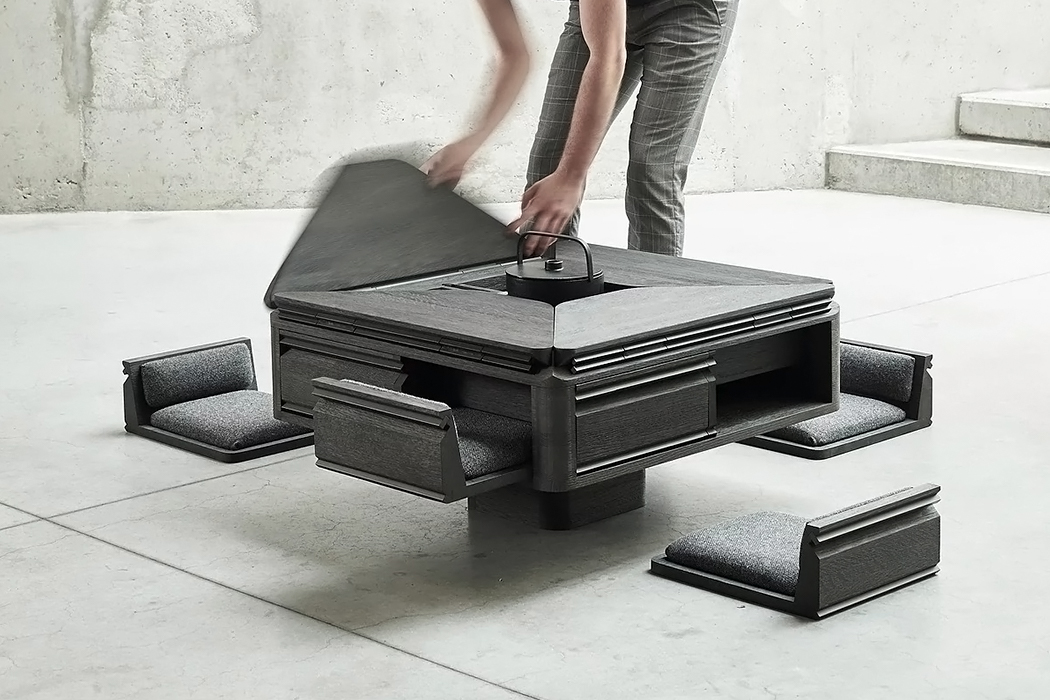
Tables are an essential piece of furniture in every home or office. Whether it’s one to work upon, eat on, or place your favorite knick-knacks and souvenirs upon, tables are pretty much irreplaceable. Tables have different genres within them, from coffee tables to dining tables to desks to work upon, there’s a table for your every need! However, designers have been adding modern twists and turns to this ordinary everyday product! The result is innovative and unique table designs that cater to your various needs in an interesting and fun manner. From a modular extending tea table to a coffee table that doubles up as a planter, we’ve curated a collection of table designs that are a far cry from the usual ones. You won’t be able to stay away from these designs for long!
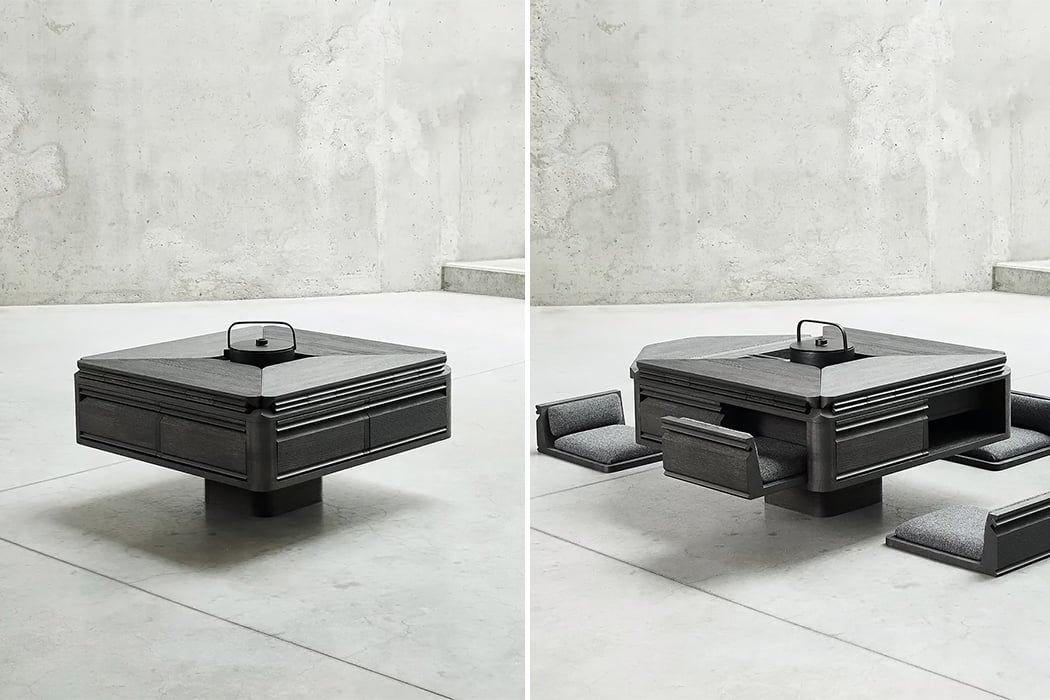
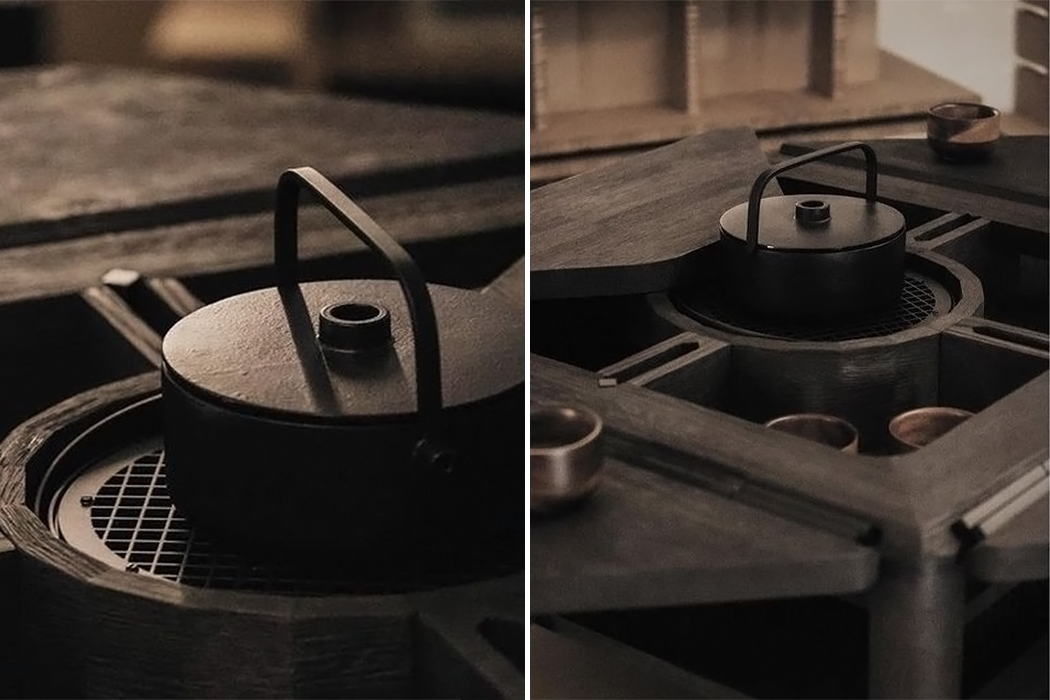
Tea time is significant in many Asian cultures, it is a moment of pause in the day where one can enjoy a peaceful moment of solitude or socialize and relax with friends. Tea time is a beautiful ritual in Japanese culture and Hasu is a tea table inspired by that zen practice. Hasu transforms itself as the tea ritual progresses making it a contemporary piece of furniture that still pays a tribute to the process. It starts as a minimal compact structure and ends as a complete furniture set for tea time. Hasu’s design allows storing an extensive tea collection while presenting it in a unique and clean manner – it is almost like you can fold or unfold the tea time ritual like origami. There is a lot of storage for all the objects needed for tea rituals and the table allows you to present them one by one during tea time, it is all on-site so everything is handy as well as neatly tucked away. The unfolding of the four upper tabletops marks the beginning of the tea time ritual. Extend the seating to four guests by simply pulling the floor chairs from the table. Even when it is not in use, it still upgrades the space as an abstract piece.
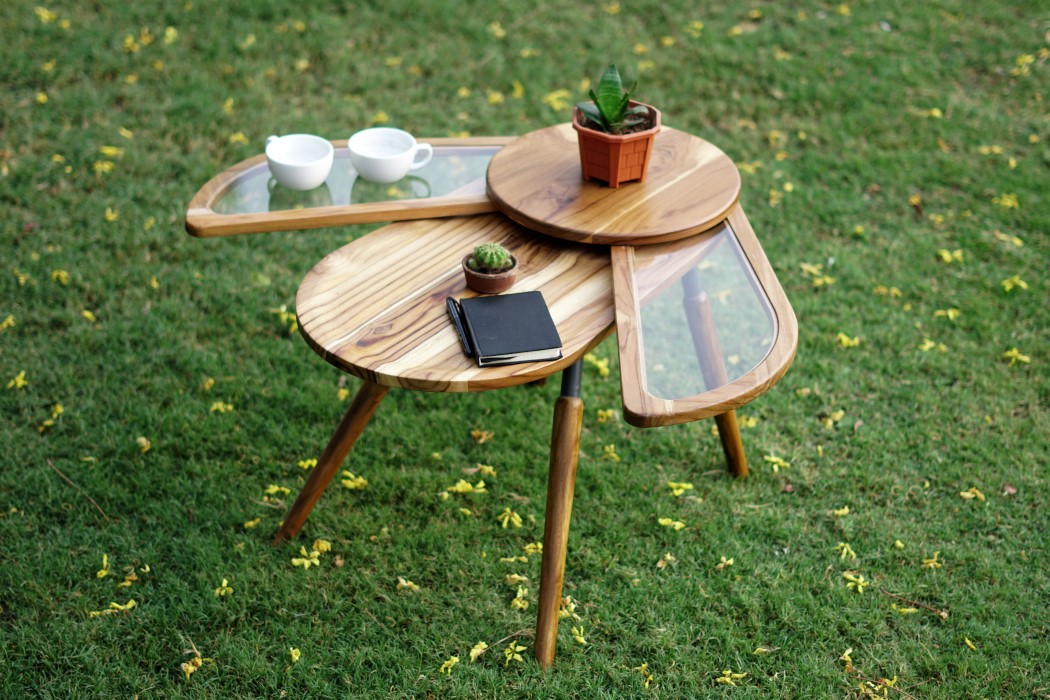
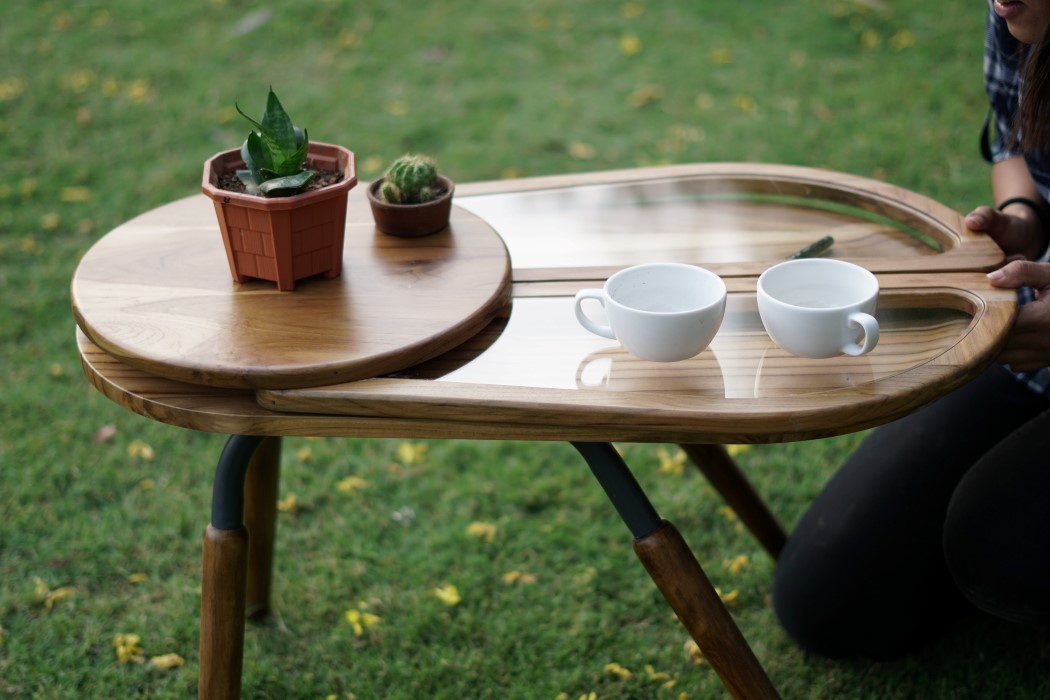
In an unusually beautiful case of nature-inspired design, the Elytra table by Radhika Dhumal expands in size by ‘spreading its wings! The table comes inspired by beetles and the way their wings nest perfectly around their body. The table itself comes with perfectly natural bug-like proportions that fit in well as garden decor and uses two ‘wings’ to expand in the surface, much like the beetle. Elytra’s design is dominated by rounded forms that give it a friendly, pet-like demeanor and feature four legs that are positioned in a way that gives the Elytra its unique, animalistic stance. The table’s surfaces are split into four broad parts, including a wooden ‘head’ and ‘body’ as well as two glass-inlay wings that can be opened out to expand the table’s surface to store an extra few cups of tea, a planter, or two, and perhaps a notebook to doodle your ideas on!
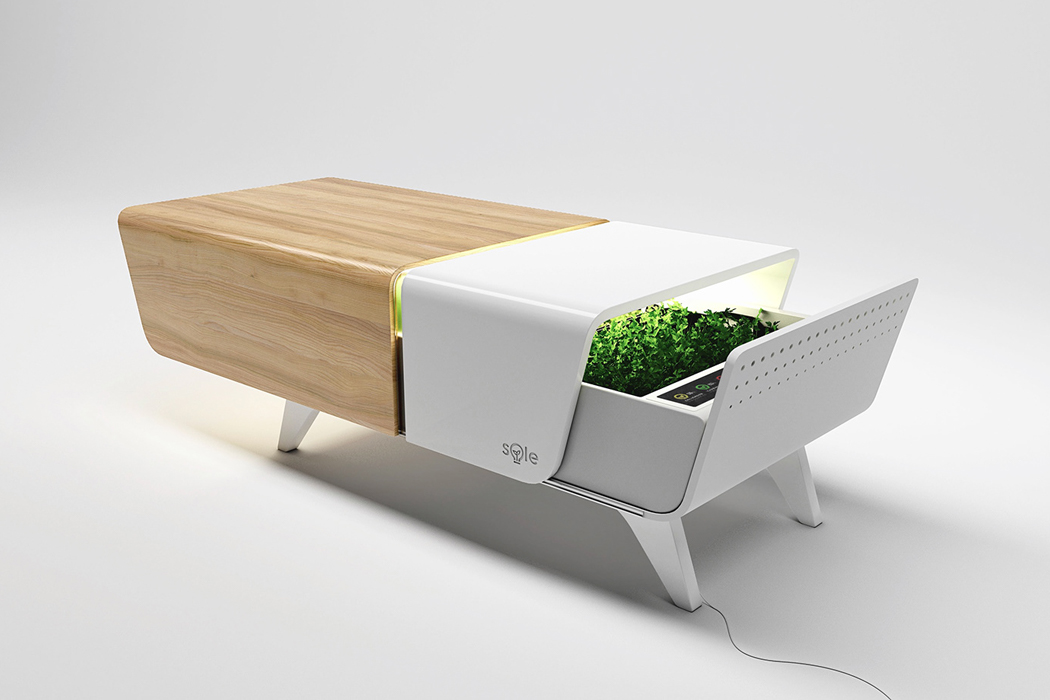
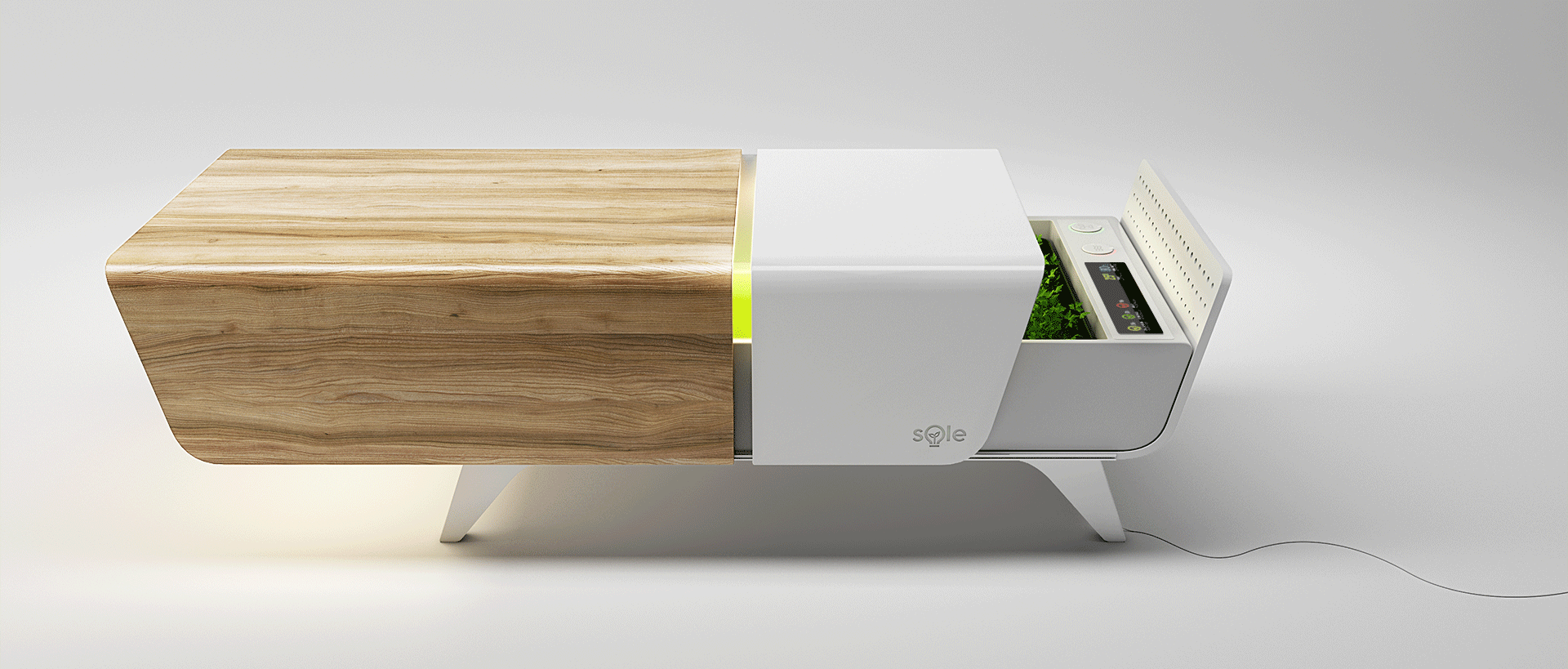
More people are moving into cities, which means that access to home gardening is decreasing since natural light is harder to come by and smaller apartment spaces, like efficiency studios, are preferred. Thankfully, SOLE’s coffee table was designed to take up as little space as possible in order to fit into even the smallest of studios. Indoor urban gardening is usually practiced by using grow box containers that require a lot of window ledge space and natural sunlight – both of which can be hard to come by in city apartment searches. In order to make home gardening possible in any city-living space, SOLE maintains the perfect climate, temperature, and nutrients for you and your chosen plants so long as they fit inside the coffee table’s extensive body. While researching the influence of temperature, exposure time, intensity, color from visible light, along with the distance and angle of light distribution, the designers behind SOLE decided to incorporate a lighting system that would enhance plant growth by imitating the effect of the sun’s rays have on indoor plants.
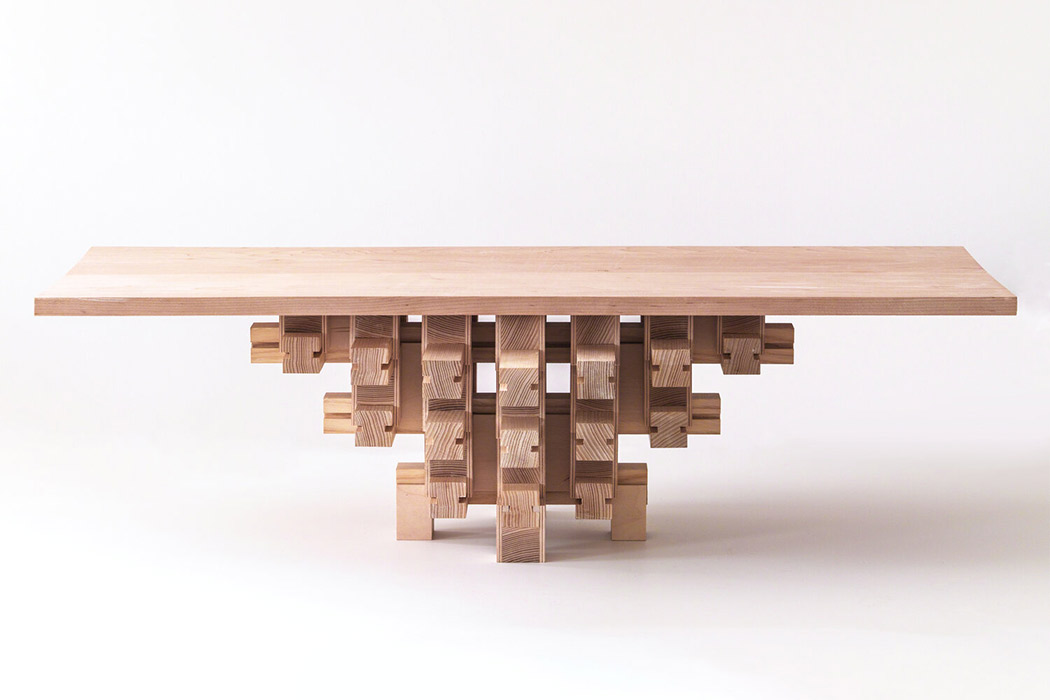
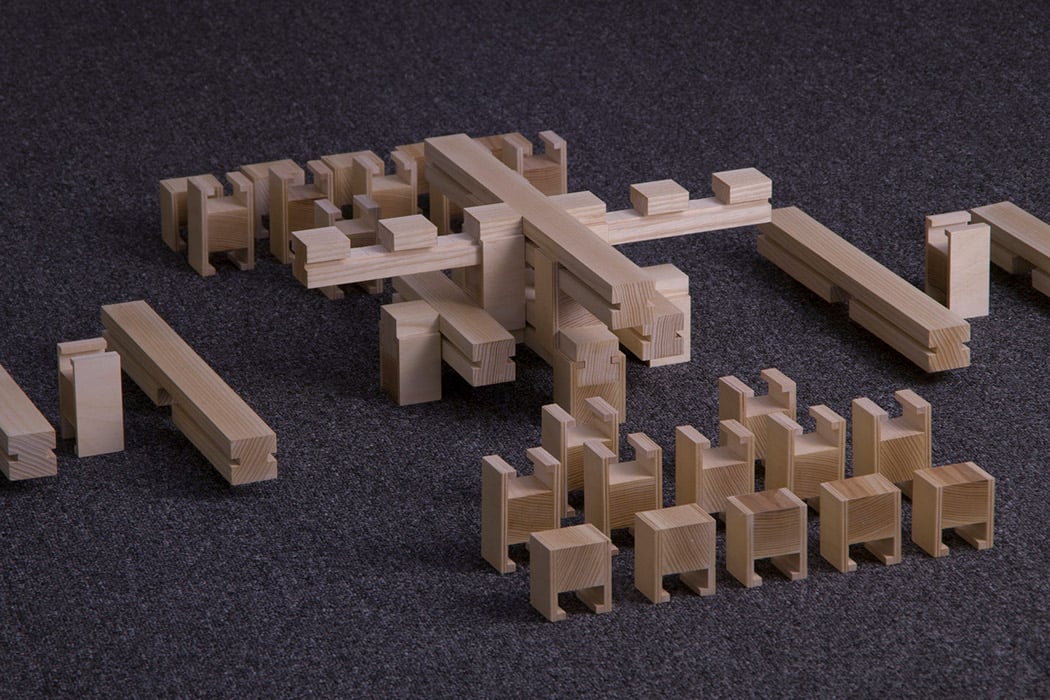
Alright, who is ready for a table that looks like art and does not come with a frustrating IKEA assembly guide? Because Boston-based designer Mian Wei has created this beautiful piece of furniture that marries minimal aesthetic with cultural heritage. The Dougong blocks from ancient Chinese architecture play a central role in the build and concept of the grid table – think of it as an advanced Lego challenge! Mian Wei won the Silver A’Design Award for this grid table in the homeware and furniture category, showcasing his exceptional skills as a multimedia artist who brings to life ideas that blend industrial design and emotions seamlessly. This is a no screws assembly – yes – there is no need to keep a track of the different screw sizes and the tiny anvil! The grid table relies on the ages-old Dougong method of interlocking blocks so effectively that it not only distributes weight evenly but also lays a strong foundation while experiencing history. The supporting structure (Dougong) is made of modular parts that can be easily disassembled and reassembled in need of storage and moving. The bracket connectors (Gong) slide easily into the beams (Dou) to form the weight-bearing structure and retain structural integrity when the table is being lifted. It is made of ash, maple, and plywood which brings tone and texture ‘to the table’ (I just had to take that opportunity!).
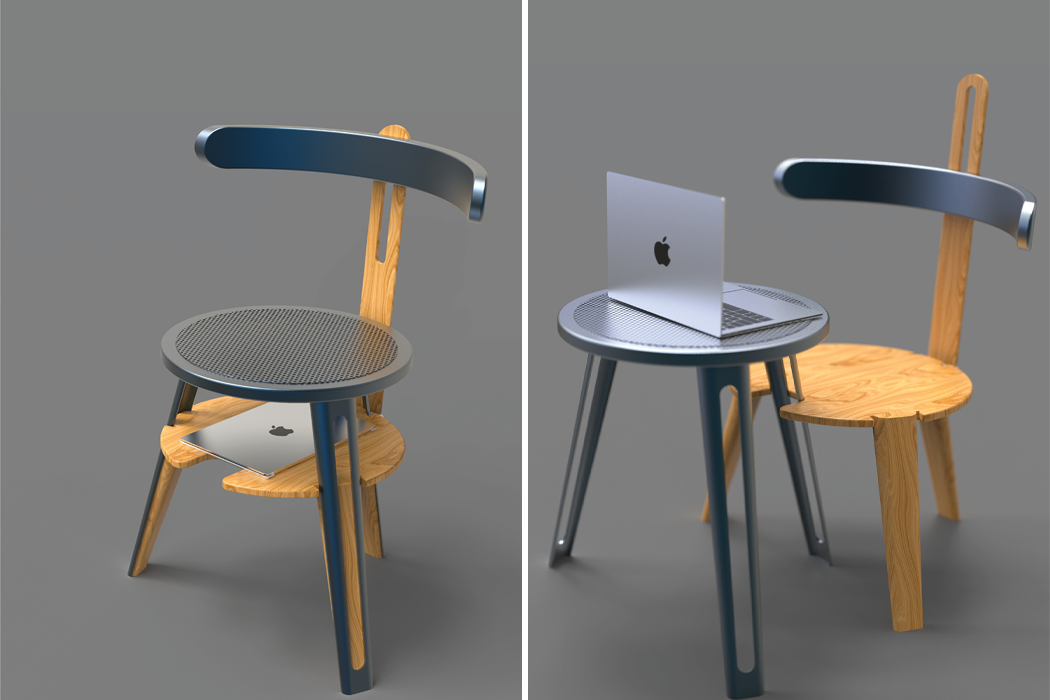
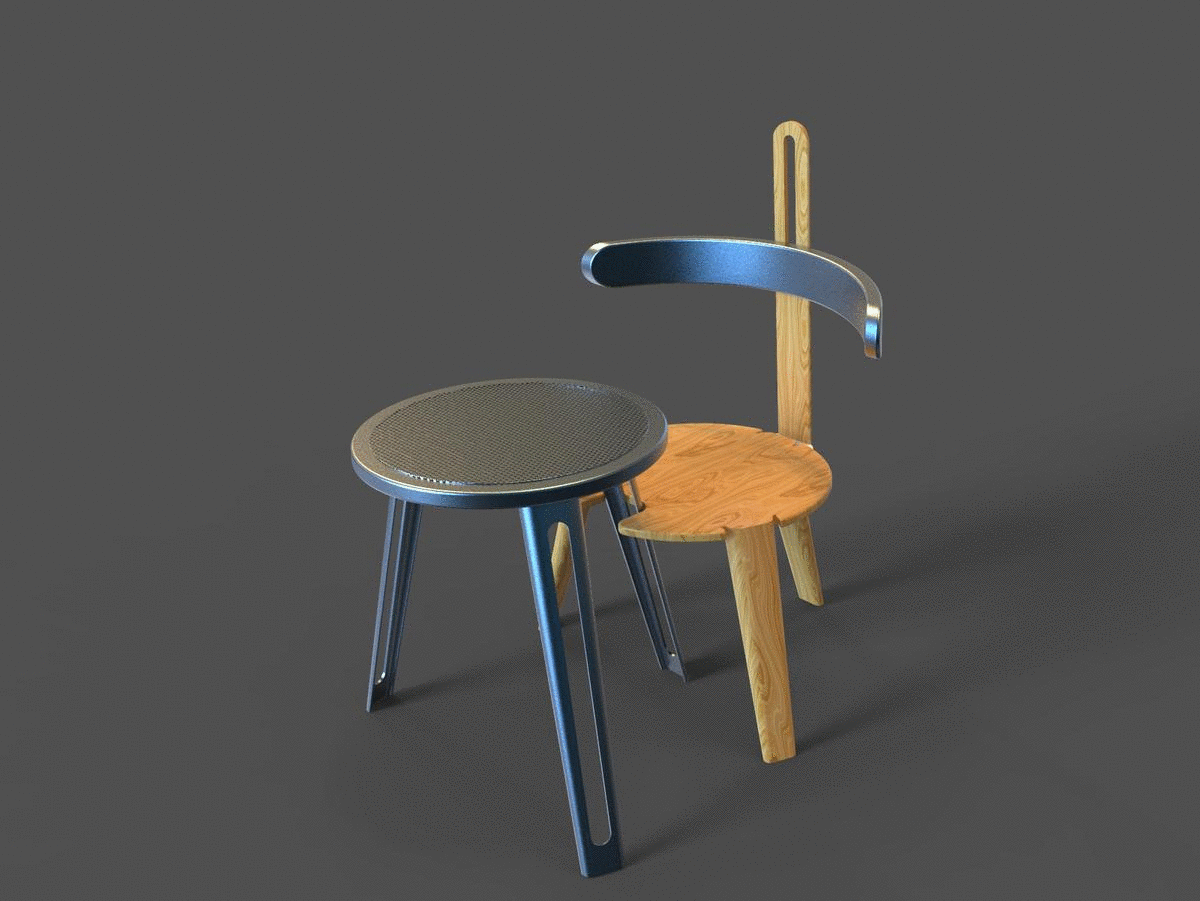
The rustic, artist-in-studio appeal of DUAL hits home with the wooden chair’s natural pine finish and stainless steel stool attachment, offering a finished look that is both familiar and clean. The overall function of the chair is relatively easy to understand. When the stool attachment is stacked on top of the chair, the backrest can rise to its highest position to offer optimal support for your posture. The chair’s seat comes equipped with notches that coincide with and frame the stool attachment’s legs for easy stacking and the extra space between the chair’s seat and the stool attachment also functions as storage space for things like your laptop or lunch bag. In order for the user to transform the chair into a desk setup, complete with a table and chair, then the stool attachment simply slides into the largest cavity on the chair’s seat. With the stool attachment securely positioned in front of and attached to the chair, the backrest also slides down to meet the user’s new seated height.
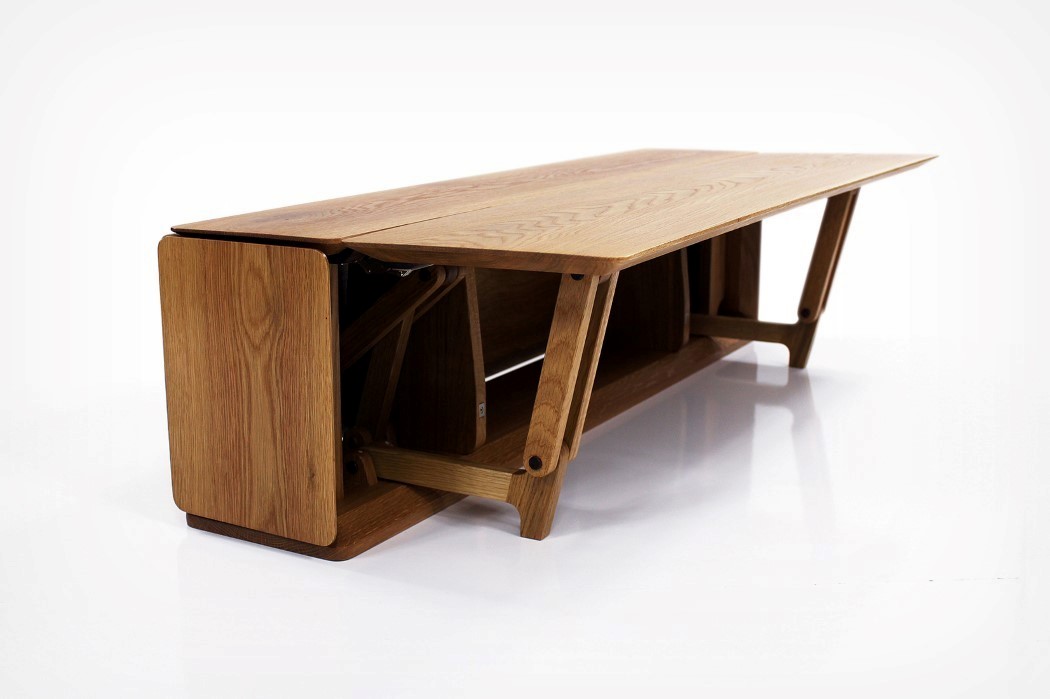
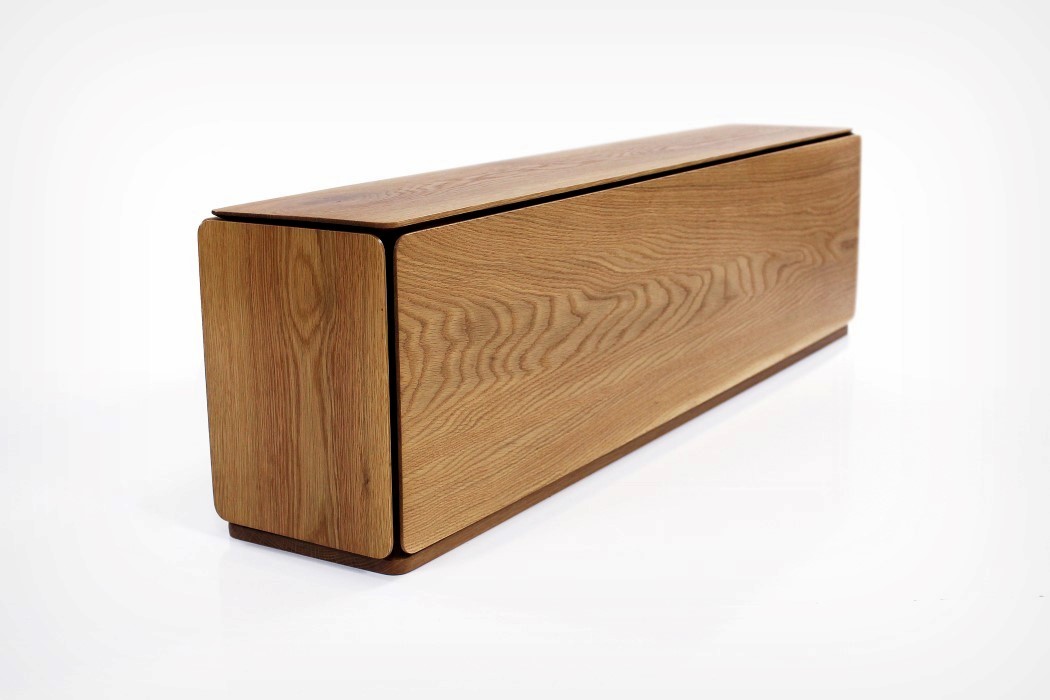
The Lido looks like any innocuous table or kitchen-island, but give it a few adjustments and you can increase its area threefold. Made from oak (although it could just as easily be made in any other type of wood), the Lido uses hinged side panels to expand in size whenever you’re expecting extra company. Just lift the panels up and a mechanism causes an extra pair of table-legs to pop out too, giving you a stable table (I’m a poet and I didn’t even know it). Perfect for smaller apartments, the Lido comes with a relatively low physical footprint but gives you the ability to swiftly and easily expand when you have guests over.
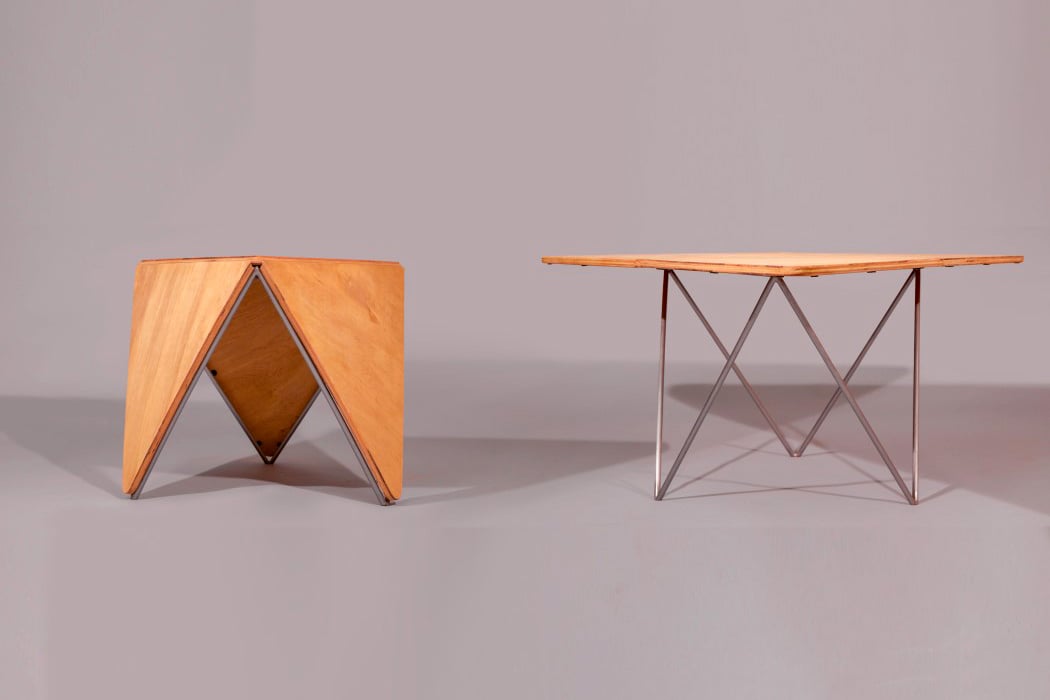
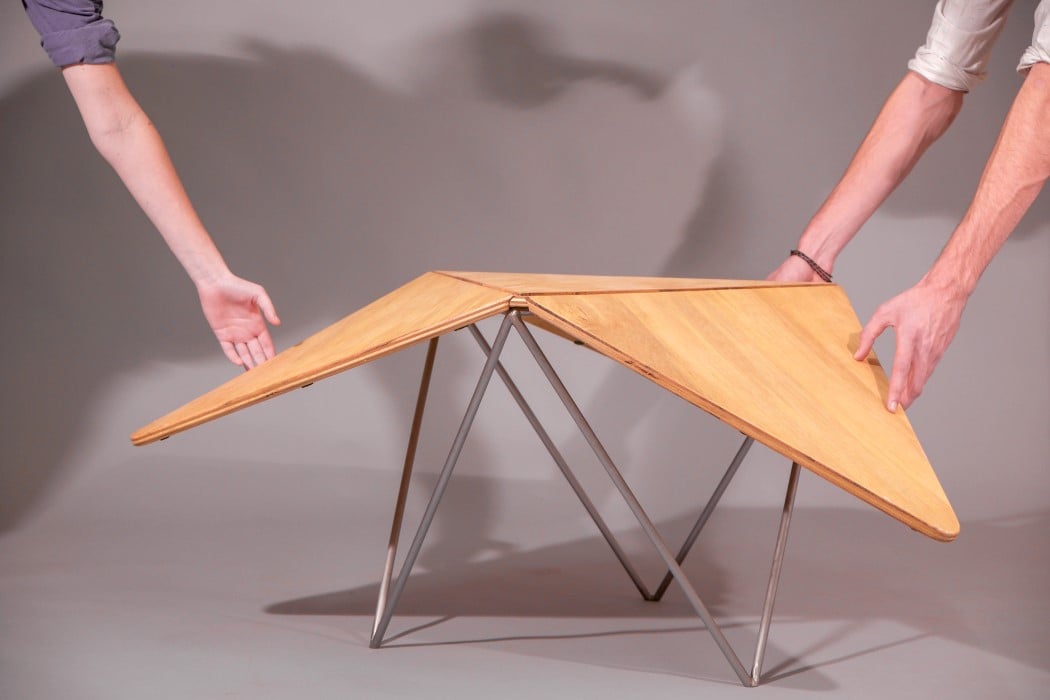
Based on the geometry of an octahedron, the Clover Table by Peter Nasielski comes with a metal frame, a central tabletop surface, and three wooden leaves that fold outwards to expand the table’s surface-area by 400%. The Clover Table’s expanding design is uniquely appealing because of two key elements… One, the fact that the table’s design doesn’t focus on its space-expanding nature… the Clover Table looks like any chic, minimalist table when closed. And Two, the way the Clover expands is so simple and fun, it gives it a positive interactive element that’s useful and worthy of showing off! Perfect for small apartments, balconies, or backyards, the Clover table gives you the convenience of compact size along with the flexibility of expanding it when friends come over… and who knows, its clover-inspiration may bring it some luck too!
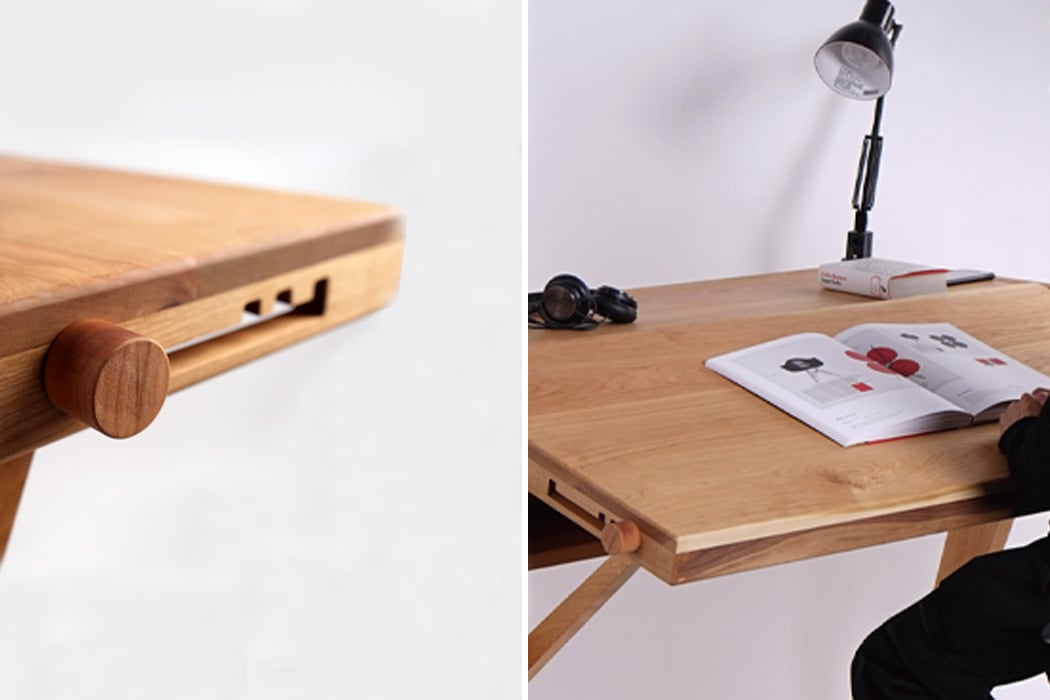
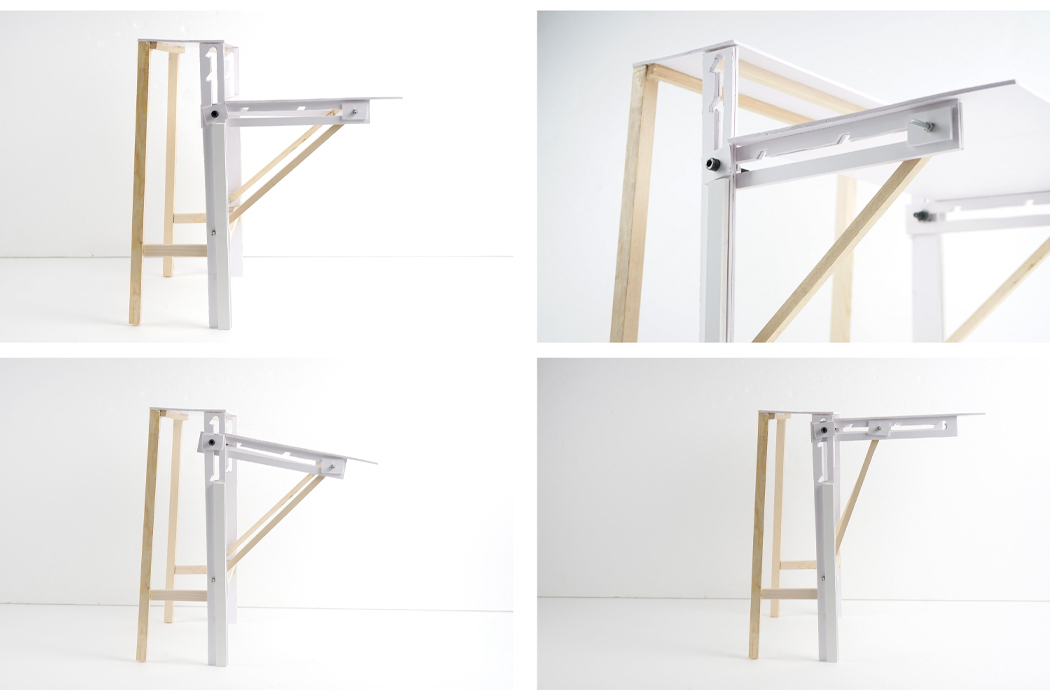
Recognizing the multiple issues that arise with artists, specifically designers, and their desks, Long Chan constructed Lift, a desk that can adjust to meet your needs. From the right angle, Lift almost appears like a heavy-duty, oversized wooden TV tray table, but looking at it head-on, it’s rectified as the designer’s workstation. While my days spent eating chicken noodle soup on a TV tray table while watching Cartoon Network are over, Lift utilizes a sliding mechanism that echoes the same one as the iconic living room staple from yesteryear. In order to assume different shapes, Lift depends on two sliding wooden pegs on both sides. The sliding wooden pegs on Lift’s front legs lower the desk’s working space to assume the shape of a traditional writing desk, with additional storage space is made available in the process, similar to that of a traditional secretary desk. Then, the other sliding wooden peg, placed along the side of the desktop, adjusts the desktop to form a drawing workstation, which sets the working space of the desk at an angle.
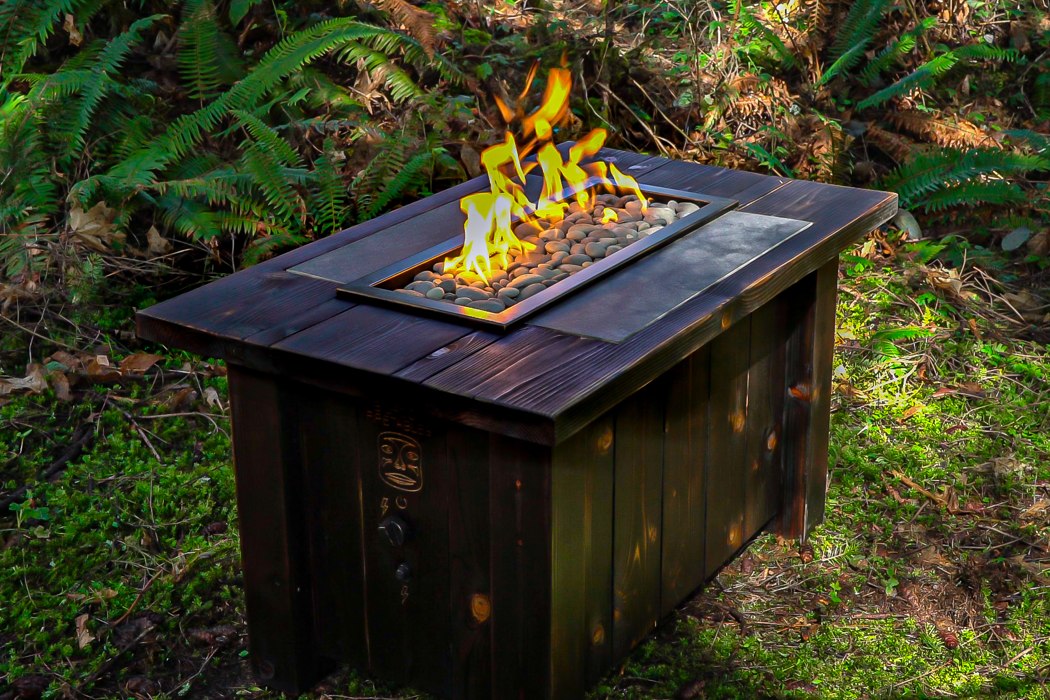

The Bigfoot Table comes handcrafted out of Western Red Cedar wood with a built-in lightweight stainless steel endoskeleton to provide it with its strength. Right in the center of the table lies an opening that reveals a rectangular fireplace built right into the tabletop. The fireplace is supplied with fuel using a propane canister that can be placed in the hollow-space below and comes with a metal outer-casing to protect the wood from getting burnt. Scattered within the fireplace pit are faux-stones that help create a truly remarkable burning surface that’s perfect for roasting smores on, and the fire can be ignited electrically with a simple push of a button and even regulated with the turn of a knob. The fireplace cover is even designed to be reversed, with a game of Mancala integrated into its flip-side – with the ability to use the firestones as game pieces!

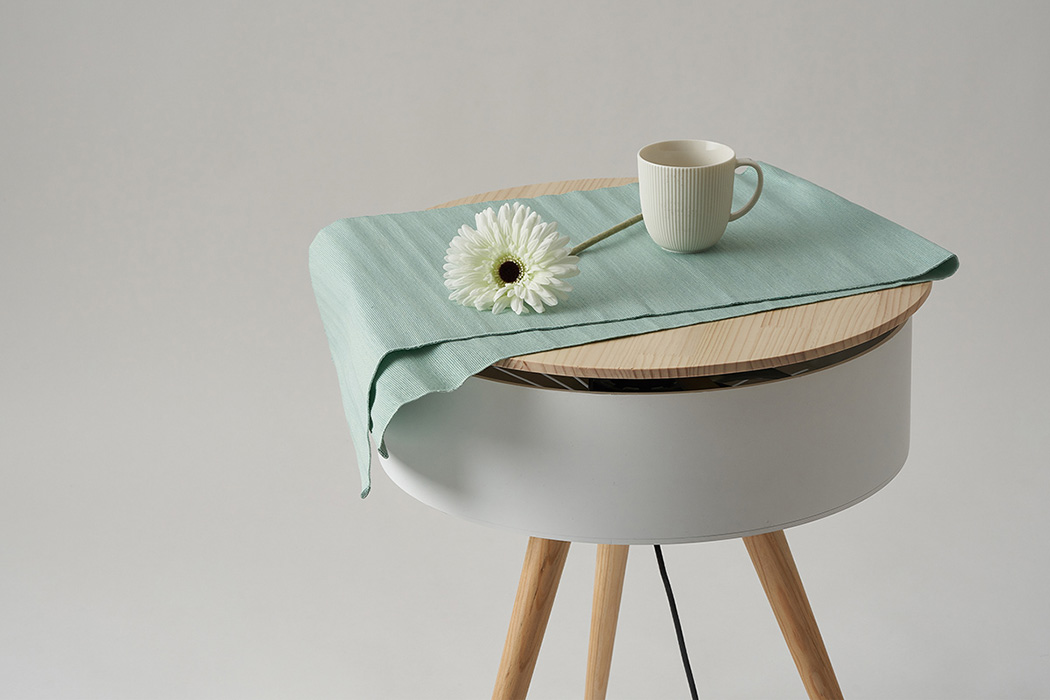
Every year when summer starts, fan sales surge and we revel in the cool breeze of air that those rotating blades provide. A lot of people have started ditching their air-conditioning units for the adverse effects that they have on climate change compared to fans. The reduction in energy bills is just an added advantage. But as soon as summer is over, these fans start crowding in a corner of our houses gathering dust, occupying space that could be used otherwise. Designer Wonho Lee saw this problem and came up with an ingenious idea of merging two pieces of furniture into a beautiful synthesis that exemplifies form following function in its truest essence. Brise is a fan that doubles up as a table at the same time. The name comes from a movement in ballet (Brisé) which serves as the inspiration for the styling of this product. Of course, we may want to call it Breezé from now onwards.

